You have 0 product(s) in your cart.
Abyss Scuba Diving
Exploring The Vibrant World Of The Nudibranch: An In-depth Guide To Sea Slug Diversity
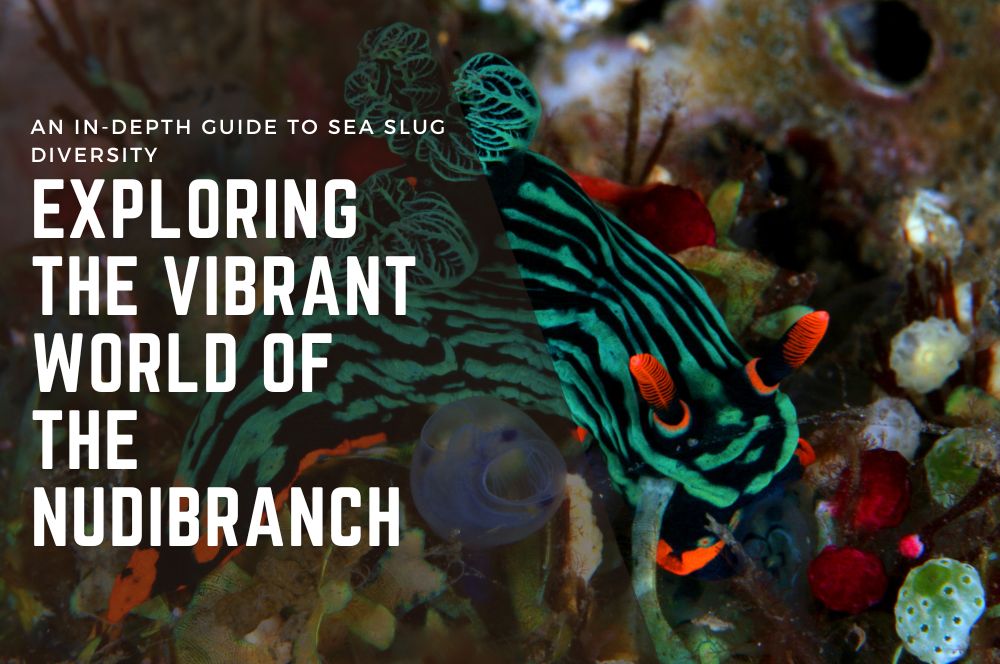
Exploring the Vibrant World of the Nudibranch: An In-Depth Guide to Sea Slug Diversity
Discover the enchanting sea slugs of the marine world, the nudibranch, famed for their vivid displays and crucial ecological roles. This guide explores their unique characteristics, from their varied diets to their exquisite defence mechanisms, and the importance of their diverse habitats. As you navigate through these pages, uncover how nudibranchs exemplify adaptation and diversity, and why their preservation matters to our oceans’ future.
Key Takeaways
-
Sydney’s waters host a rich diversity of marine species, notably the colourful and intricate nudibranchs, which thrive in a unique confluence of tropical and temperate currents essential for a balanced ecosystem.
-
The health of Sydney’s marine habitats faces multiple pressures from climate change, urbanisation, and human activity, highlighting the need for improved conservation efforts to maintain biodiversity and ecosystem stability.
-
Scientific research, citizen science projects, and sustainable management strategies underpin efforts to conserve nudibranch species and their habitats, with various Australian laws and restoration projects actively supporting these initiatives.
Nudibranchs of Sydney: A Diver's Paradise
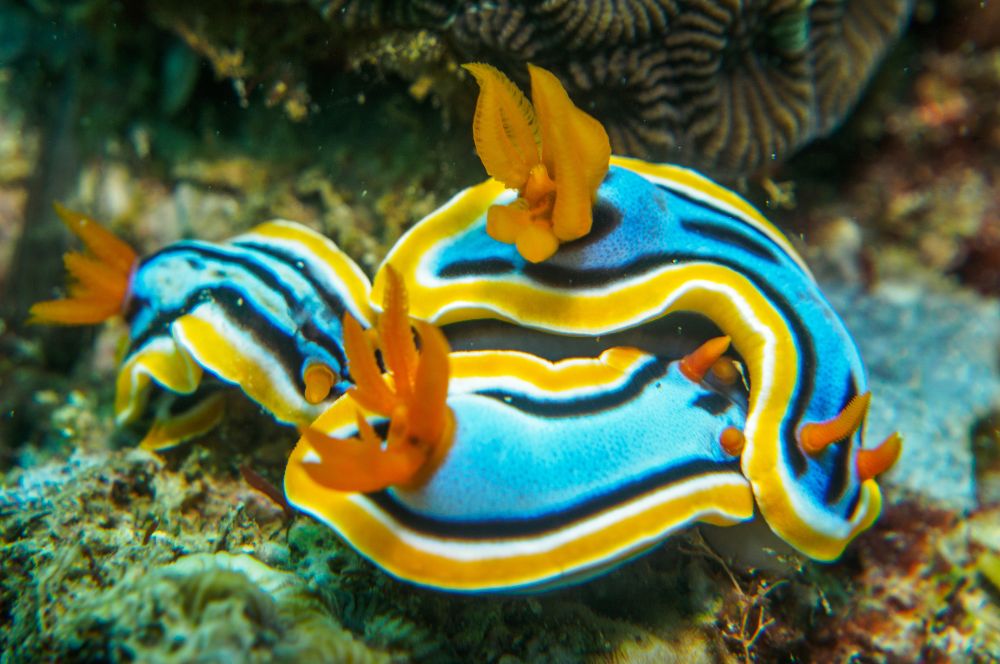
Diving into the waters around Sydney is a surreal experience, as if entering an underwater utopia teeming with an array of unique marine species. The southern oceans of Australia, which encompass Sydney’s waters, are home to a massive 80% of marine species found nowhere else on earth. The marine biodiversity in these waters contributes to the productivity, resilience, and adaptability of ocean ecosystems, shielding them from the ripple effects of individual species’ extinctions.
Among the diverse marine life of Sydney, the nudibranchs, or sea slugs, stand out with their mesmerising colours and intricate patterns. The Donut Nudibranch, for instance, is a rare species that has made the local waters its home and is a highlight for divers and marine enthusiasts alike. But the Donut Nudibranch is just one part of the story – Southern Sydney Harbour is a hotbed of marine biodiversity, with several species, like the sea slug Pleurobranchus weberi, previously unrecorded in this region, now making their presence felt.
The waters of NSW, including coastal, marine, and estuarine, hold significant value. They harbour diverse habitats and benefit from a confluence of subtropical and temperate currents, resulting in high levels of biodiversity, especially around Sydney. But the richness of Sydney’s marine life is not just a treat for the eyes or a diver’s paradise. The richness of Sydney’s marine life, beyond a visual treat, contributes to the health and balance of marine ecosystems, highlighting the importance of conservation in these regions.
Sydney’s marine environments, with its sponge gardens, underwater landscapes, and marine biodiversity, are a submerged Eden waiting to be explored. The underwater images captured by scuba divers bear testament to the breathtaking beauty beneath the waves, making Sydney a favourite destination for marine enthusiasts from around the world.
Be it a scuba diver with a camera, a marine biodiversity enthusiast, or a nature lover enchanted by sea slugs and other marine species, Sydney’s waters teem with experiences for all.
The Rainbow Beneath the Waves
One of the most enchanting aspects of diving in Sydney’s marine environments is the opportunity to witness the dazzling display of colours and patterns exhibited by the local nudibranch population. These sea slugs are the artists of the underwater world, painting the ocean floor with their vibrant hues and intricate designs.
Among the rich diversity of these sea slugs, the Blue Dragon Nudibranch and the Spanish Dancer stand out for their striking colours and intricate patterns, embodying the visual splendour found beneath Sydney’s waves. The Blue Dragon, known for its bright blue colour, and the Spanish Dancer, with its fiery red hue, are a sight to behold. These splashes of colour against the ocean’s blue backdrop create a spectacle that is nothing short of mesmerising.
Keep these underwater spectacles in mind for your next dive into Sydney’s coast. They’re not just beautiful to look at - they’re a testament to the rich biodiversity that thrives beneath the waves, a rainbow hidden beneath the ocean surface.
Habitats and Hideaways
The coastal and marine environments of Sydney not only support a vibrant array of marine species, including the colourful nudibranchs, but they also harbour other key ecosystems and biodiversity essential for the wellbeing of various marine species. From sandy beaches to vibrant coral reefs, these ecosystems are critical habitats, supporting the region’s marine biodiversity.
However, these habitats and the marine life they support are not without threats. Some of the major stressors on aquatic vegetation along the NSW coast, affecting the habitats where nudibranchs reside, include:
-
Climate change, which leads to changes in tidal levels and can have significant consequences for all organisms reliant on habitats such as beaches, mudflats, sea-grasses, mangroves, and salt-marshes.
-
Urbanisation and expansion of marine infrastructure.
-
Physical damage from boating activities.
-
Catchment inputs.
These threats can have a negative impact on the habitats and the nudibranchs that rely on them.
Despite facing these challenges, a wide variety of nudibranch species continue to find a home in Sydney’s underwater landscape. Each habitat, from the hidden corners of the coral reefs to the wide expanses of the sea floor, offers a unique hideaway for these fascinating creatures. It’s a reminder of the interconnectedness of our ecosystems, and the importance of each organism, no matter how small, in maintaining the balance of our marine environments.
Unveiling the Secrets of Sea Slugs
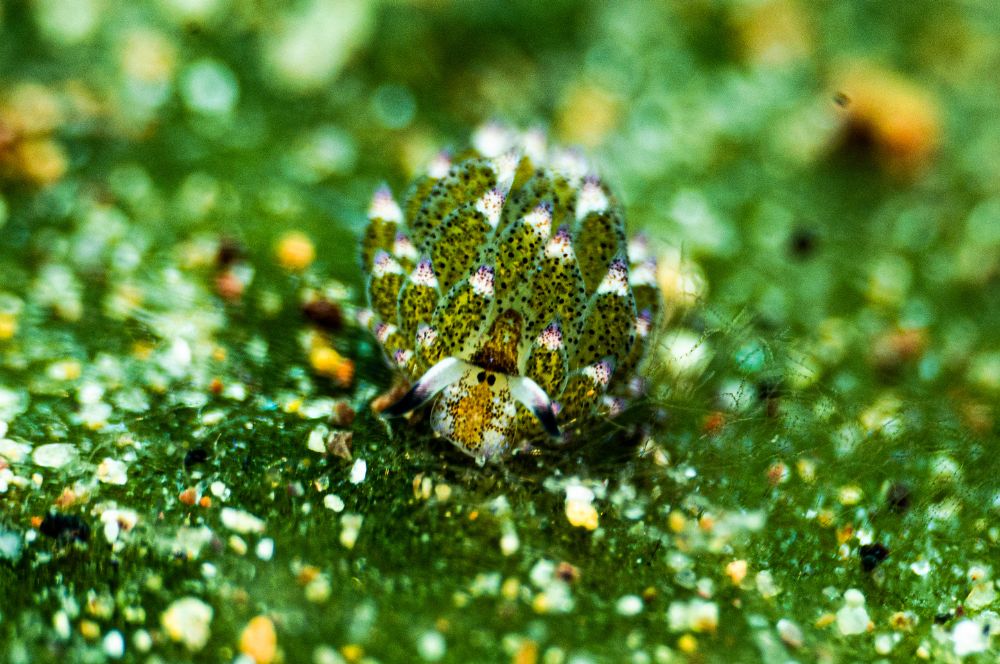
As we delve deeper into the world of sea slugs, their fascinating secrets begin to unravel. One of the most distinctive sea slugs, known as the ‘blue dragon’ or Glaucus atlanticus, is a testament to the intriguing adaptations these creatures have developed over time.
Glaucus atlanticus, with its relatively small size averaging about 3 cm in length, has evolved to survive in the open sea far from coastlines, a testament to its adaptability. It achieves buoyancy through a gas-filled sac in its stomach, a unique adaptation for life in the pelagic zone of the ocean.
Not only is Glaucus atlanticus a master of survival, but it also possesses some unique defence mechanisms. For instance, it utilises countershading with blue or blue-white coloration on its foot to protect from predators and potentially reflect harmful ultraviolet sunlight. More impressively, this species can consume and store venomous nematocysts from siphonophores, which it then uses to defend against predators and capture prey.
Even their mating habits are intriguing. Two Glaucus atlanticus individuals attach ventral sides and both can produce eggs, showcasing a unique aspect of their life-cycle. From their survival strategies to their reproductive habits, the secrets of the sea slug reveal a creature that is as complex as it is beautiful.
The more we learn about these sea slugs, the more we realise that they are not just colourful displays on the ocean floor. They are survivors, perfectly adapted to their environment, and a testament to the wonders of evolution.
Masters of Camouflage and Defense
As we continue to explore the world of sea slugs, their mastery of camouflage and defence strategies becomes evident. These creatures, while small, have developed intricate systems to protect themselves from predators and ensure their survival in the diverse marine ecosystems of Sydney. The existence of cryptic species among sea slugs further highlights the complexity of these fascinating organisms.
Some nudibranchs, like Glaucus atlanticus, utilise a remarkable defence mechanism by storing stinging cells called nematocysts from their jellyfish prey within their own tissues. This ingenious strategy helps deter predators and also aids in capturing their prey. Along with this, nudibranchs are equipped with intricate body structures such as elaborate frills, ridges, and appendages that aid in their defence, making it difficult for predators to consume them.
Camouflage, another key survival strategy for nudibranchs, allows them to blend into their surroundings by adopting the colours of their prey into their tissues, thus becoming less visible while feeding. This ability to blend into their environment is a testament to the adaptability of nudibranchs, showcasing their survival prowess in the vibrant marine ecosystems of Sydney.
The Diet of a Nudibranch
The diet of a nudibranch is as unique as its vibrant colours. Much like their defence mechanisms, their dietary habits are intricately linked to their survival strategies in the marine ecosystem.
Some nudibranchs are known for feeding on sponges and are capable of sequestering distasteful or toxic chemicals from the sponges’ tissues to use as a chemical defence against predators. This ability to use their prey’s own defences to their advantage is a unique aspect of nudibranch biology that further underscores their adaptability.
Certain nudibranchs prey on cnidarians and repurpose their stinging cells, integrating them into their own cerata to develop a stinging defence mechanism. This strategic use of their food source for defence is yet another example of the fascinating adaptations these creatures have developed to survive in the diverse marine ecosystems of Sydney.
Navigating the Depths: Scuba Diving with Nudibranchs
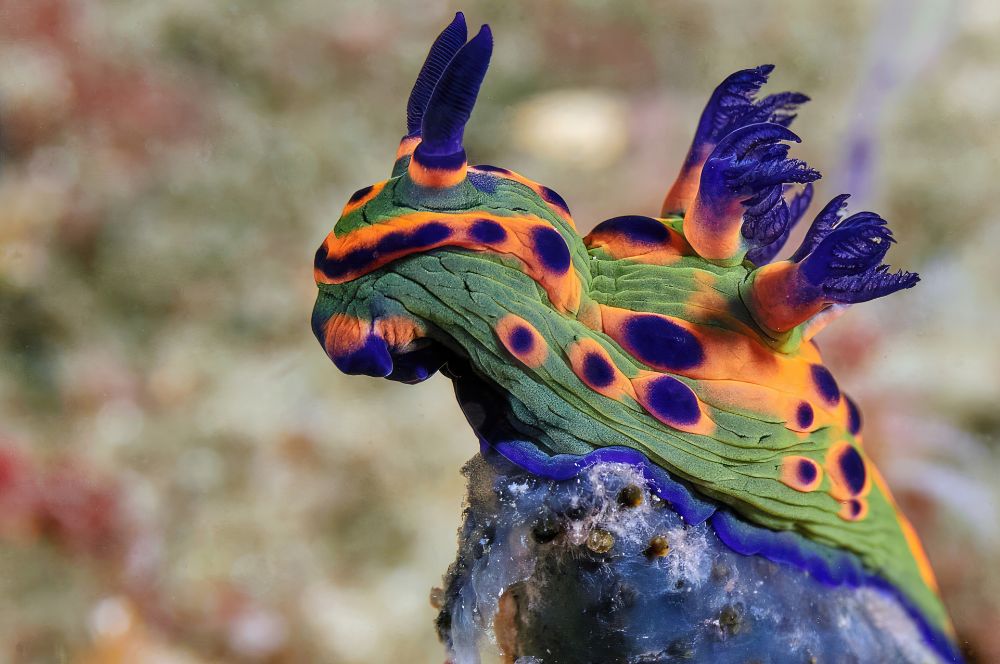
Observing nudibranchs in their natural habitat is a unique opportunity offered by scuba diving. However, without the right knowledge and strategies, spotting these elusive creatures can be challenging. It is crucial to have local knowledge on the seasonal behaviours and habitat preferences of nudibranchs for successful photography and location.
Researching different types of nudibranchs online can be beneficial before embarking on a dive. This preparation can help divers identify and appreciate the sea slugs they encounter during their underwater adventure. Likewise, hiring a knowledgeable local dive guide can significantly enhance the likelihood of spotting nudibranchs, especially in areas less known to the diver.
While the lure of capturing a beautiful underwater image of a nudibranch can be strong, it is recommended that divers avoid relocating nudibranchs. Doing so can cause them distress or potentially harm them. Instead, divers should focus on finding the local food sources that nudibranchs feed on, which can provide key insights into where they might be found during a dive.
Whether you are a seasoned diver or a beginner, these tips can guide you to successfully navigate Sydney’s marine environments. With a little patience and the right strategies, you’ll be well on your way to capturing stunning underwater images of the vibrant world of the nudibranch.
Best Dive Spots for Nudibranch Sightings
When it comes to spotting nudibranchs, location is key. The depth range where divers can observe nudibranchs around Sydney’s coast is between 12 and 33 meters. Diving within this range increases the likelihood of encountering these beautiful creatures.
Sydney’s marine environments, with their rich marine biodiversity, are a diver’s paradise. With a myriad of marine species to observe and photograph, each dive is a unique adventure. From the vibrant coral reefs to the tranquil seafloors, each dive spot offers a unique perspective of the underwater world and its inhabitants.
Whether diving near the coast or in deeper waters, do remember to look out for the vibrant colours and intricate patterns of the nudibranch. These sea slugs are a testament to the beauty of Sydney’s marine biodiversity, and spotting one during a dive is an experience to cherish.
Photography Underwater
Underwater photography is an art in itself, and capturing the beauty of nudibranchs requires a blend of skill, patience, and the right equipment. Early morning or late afternoon is the best time for underwater photography to take advantage of the golden light from the side. Atmospheric conditions also play a crucial role as they affect the clarity and quality of the images captured.
Fins, a mask, and an underwater camera with a suitable housing are essential gear for underwater photography. Camera housings should be chosen based on whether they need to be buoyant or non-buoyant, depending on the specific needs of the photo shoot. For those on a budget, GoPros and newer iPhones are suitable for underwater photography as they are waterproof to a certain depth.
Strobe lights can be helpful in low light or deepwater diving situations, but photographers should be aware that they can also cause backscatter. With the right equipment and techniques, even a novice photographer can capture stunning underwater images, bringing the vibrant world of the nudibranch to life.
The Science of Studying Sea Slugs
Our understanding of nudibranchs and their role in marine ecosystems is greatly enhanced through scientific research. From citizen scientists contributing to nudibranch research through activities such as photo submission competitions, to the analysis of photographic data for species identification, the scientific community is continually advancing our knowledge of these fascinating creatures.
The Shannon–Weaver index (H′) is used as a measure of diversity to assess the variety and abundance of nudibranch species in study locations, including the dominant species. This measure helps scientists understand the biodiversity within a given area, providing insights into the health and balance of marine ecosystems.
Further enhancing our understanding of nudibranch ecology are recommendations to increase the frequency of sampling events and to utilise an incidence-based dataset with depths and coordinates. These recommendations help improve the accuracy and reliability of research findings, contributing to the conservation and protection efforts for nudibranchs.
After all, the more we understand about these sea slugs, the better we can protect them and the marine ecosystems they inhabit. The science of studying sea slugs is a testament to the importance of research and conservation in preserving the beauty and diversity of our marine environments.
Long Term Monitoring and Its Importance
Nudibranch research and conservation heavily rely on long-term monitoring. Citizen scientists have greatly contributed to this area, particularly through initiatives such as the Marine Biodiversity of Southern Sydney Harbour project and the Annual Sea Slug Census. Such monitoring is essential to distinguish between normal seasonal fluctuations, consistently low populations, or occasional appearances of nudibranchs, providing context to observed rarity in species such as the hundreds potentially inhabiting Sydney’s waters.
Ongoing research and monitoring, including a five-year marine pest species surveillance plan and programs like the Marine Integrated Monitoring Program, are pivotal for assessing nudibranch abundance and informing conservation strategies. Through long term monitoring, scientists can track changes in nudibranch populations over time, identify trends, and assess the effectiveness of conservation efforts. It’s a critical tool in the ongoing mission to protect these unique marine creatures.
Molecular and Morphological Identification
The complex process of identifying nudibranch species involves a combination of molecular and morphological techniques. Morphological analysis, which involves examining the creature’s physical structure and form, is a key part of identifying heterobranch sea slugs, such as nudibranchs. However, morphology alone is often not sufficient to differentiate between species that are morphologically similar. In such cases, molecular methods, including DNA sequencing, are employed to aid identification.
The combined use of morphological and molecular techniques offers a comprehensive approach to identifying nudibranch species and discovering new ones. By accurately identifying species and understanding their breeding patterns, scientists can track population trends, study their behaviours, and develop effective conservation strategies. The use of these techniques underscores the importance of scientific research in understanding and conserving nudibranchs.
Protecting Sydney's Marine Biodiversity
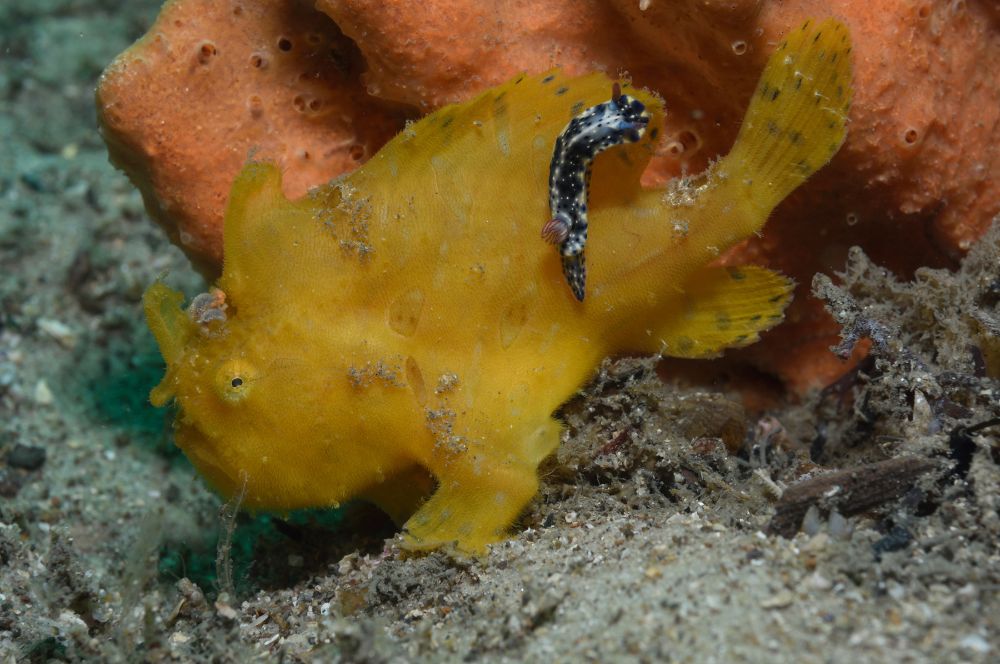
The task of protecting Sydney’s marine biodiversity holds paramount importance, especially along the east coast and south coasts. The NSW coastline stretches approximately 2,100 kilometres, with a marine estate that extends to 5.6 kilometres from the coastline. This vast marine estate is home to a rich array of marine life, including the stunning nudibranchs.
The use of environmental DNA (eDNA) sampling in Parsley Bay and Camp Cove has been essential for identifying a wide array of marine life, including fish, molluscs, and marine mammals. The Beachwatch program also plays a crucial role in monitoring recreational water quality at NSW beaches, contributing to the long-term health of coastal and marine environments.
Yet, protecting Sydney’s marine biodiversity extends beyond just monitoring and sampling. It’s also about addressing the major stressors impacting marine life and their habitats. From storm-water discharges and sewage overflows to agricultural runoff, these factors affect water quality at NSW beaches and pose risks to marine biodiversity.
Moreover, the health of coastal, estuarine, and marine ecosystems is being influenced by various human activities, with water quality as a crucial factor affected by climate change. Fishing, identified as the most significant impact on marine biodiversity in the last 50 years, has led to the depletion of fish stocks and the degradation of aquatic habitats.
Major Stressors on Marine Life
Several stressors pose a threat to the survival of marine life, including the vibrant nudibranchs. Coastal areas face significant priority threats from:
-
Urban storm-water discharge
-
Agricultural diffuse source runoff
-
Solid waste
-
Marine debris
-
Microplastics
These factors are detrimental to the environmental values of these regions.
Furthermore, climate change is causing increasing ocean temperatures, ocean acidification, and declining kelp abundances, highlighting the broader impacts of environmental changes on marine habitats. These changes can have significant flow-on consequences for all organisms reliant on habitats such as beaches, mudflats, seagrasses, mangroves, and salt-marshes.
These stressors highlight the importance of proactive and comprehensive conservation efforts. By understanding and addressing these challenges, we can better protect our marine environments and the diverse species that inhabit them.
Conservation Concerns
Conserving nudibranchs and their habitats is a matter of urgent concern. The diversity of nudibranchs includes one species with varying levels of rarity, necessitating a range of conservation measures to thoroughly assess and protect them.
Furthermore, conserving marine habitats, like seagrass meadows, is critical as they support species such as dugongs, indicating a broader global conservation responsibility. The protection of these habitats is integral to the survival of many marine species, including the colourful nudibranchs.
These conservation concerns underscore the importance of ongoing research, monitoring, and conservation efforts. By addressing these concerns, we can ensure the survival of species like the Donut Nudibranch and contribute to the health and diversity of our marine ecosystems.
Strategies for Sustainable Ecosystem Management
Protecting Sydney’s marine biodiversity necessitates sustainable ecosystem management. Several strategies and policies are in place to guide these efforts. The Marine Estate Management Act 2014 is responsible for overseeing the strategic and integrated management of the NSW marine estate. It plays a vital role in regulating activities and preserving the health of the marine environment..
The key legislation related to land-use planning and coastal management includes:
-
The Environment Planning and Assessment Act 1979: This act provides the framework for making land-use planning decisions in coastal zones. It establishes the guidelines and regulations for development and conservation in these areas.
-
Coastal Management Programs (CMPs): These programs provide the long-term strategy for coordinated management of the coast. They aim to balance development and conservation to ensure the sustainable use of coastal resources.
-
The Fisheries Management Act 1994: The goal of this act is to preserve and enhance fishery resources for both current and future generations. It also aims to facilitate the sharing of these resources among various stakeholders.
These legislations play a crucial role in protecting and managing coastal areas and their resources.
Efforts have also been made to enhance the recovery of marine populations. Habitat restoration projects at Parsley Bay and Camp Cove, such as seahorse hotels, are examples of these efforts. The NSW Environment Protection Authority administers environment protection licences for certain commercial and industrial facilities, further contributing to the protection of marine environments.
These strategies reflect the commitment to protect and conserve our marine environments, ensuring that the vibrant world of the nudibranch and other marine species continues to thrive for generations to come.
Nudibranch Encounters: Stories from the Deep
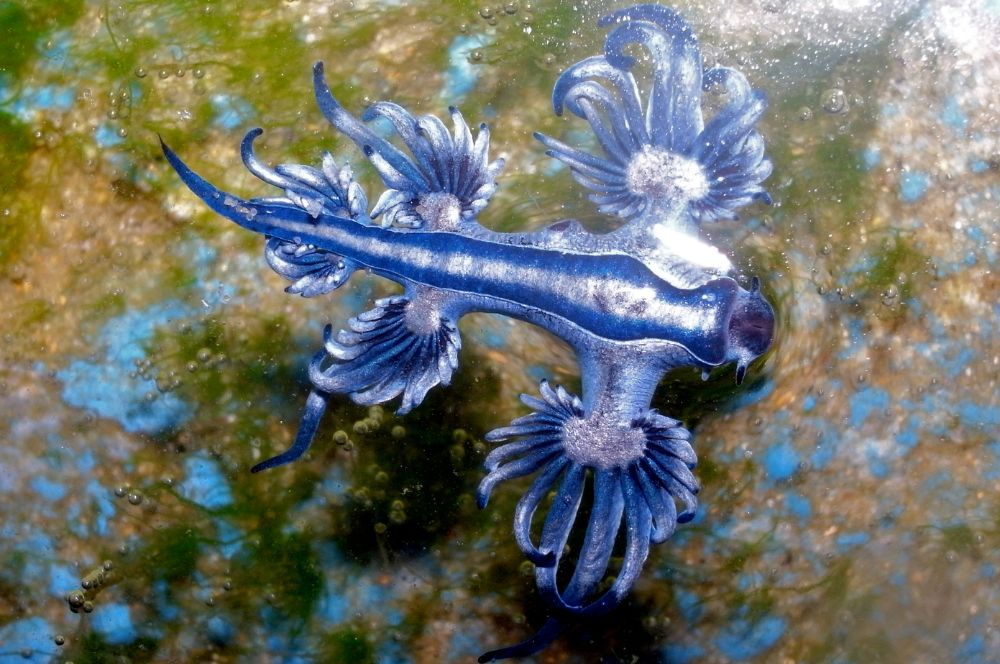
The transformative experience of diving into the ocean’s depths and encountering nudibranchs is unparalleled. It has shaped individuals’ personal and professional lives, leading some to pursue careers in marine research and conservation.
Encounters with nudibranchs and other marine life during dives have inspired many to become advocates for ocean conservation and to educate others about the importance of marine ecosystems. Each dive offers a unique adventure, with individuals recounting the enthralling nature of exploring underwater landscapes, from New England’s cold waters to observing marine life behaviours.
Direct observation of environmental degradation and marine pollution during dives has been a wake-up call for many, leading to personal commitments to protect ocean health and research into human impacts. These encounters serve as powerful reminders of the need for conservation efforts and the role we all can play in preserving our marine ecosystems.
Whether you are a diver, a marine enthusiast, or a nature lover, the deep-sea stories can inspire and instill hope. They remind us of the wonders that lie beneath the waves and the importance of our ongoing commitment to protect them.
Summary
From the vibrant marine environments of Sydney to the captivating world of nudibranchs, the journey we’ve embarked on in this blog post has allowed us to explore the intricate world beneath the waves. We’ve delved into the unique adaptations of sea slugs, navigated the depths of Sydney’s waters, examined the science behind studying these creatures, and highlighted the importance of protecting marine biodiversity.
As we conclude, let us remember that our understanding and appreciation of the marine world is not just about the beauty we see. It’s about the intricate balance of ecosystems, the unique adaptations of creatures like the nudibranch, and the ongoing efforts to protect and conserve our marine environments. Let these insights inspire us to become advocates for marine conservation and to continue exploring and appreciating the wonders of our oceans.
Frequently Asked Questions
What makes the waters around Sydney special for nudibranchs?
The unique marine biodiversity in the southern oceans of Australia, including Sydney's waters, makes it a special habitat for nudibranchs, with about 80% of marine species found nowhere else on earth.
How do nudibranchs defend themselves?
Nudibranchs defend themselves by storing stinging cells from their prey and using camouflage to blend into their surroundings. This allows them to have intricate defence mechanisms.
How can I increase my chances of spotting nudibranchs during a dive?
To increase your chances of spotting nudibranchs during a dive, research different types of nudibranchs online and consider hiring a knowledgeable local dive guide for assistance.
What are some of the major threats to marine life in Sydney?
The major threats to marine life in Sydney include storm water discharges, sewage overflows, agricultural runoff, and the effects of climate change, which impact water quality at NSW beaches and pose risks to marine biodiversity.
What strategies are in place for sustainable ecosystem management in Sydney?
In Sydney, several strategies are in place for sustainable ecosystem management, such as the Marine Estate Management Act 2014 and Coastal Management Programs, which aim to protect marine environments and habitats. These efforts also include habitat restoration projects and environment protection licences.
More Interesting Marine Life
-
Discover the Ocean's Hidden Gem: The…
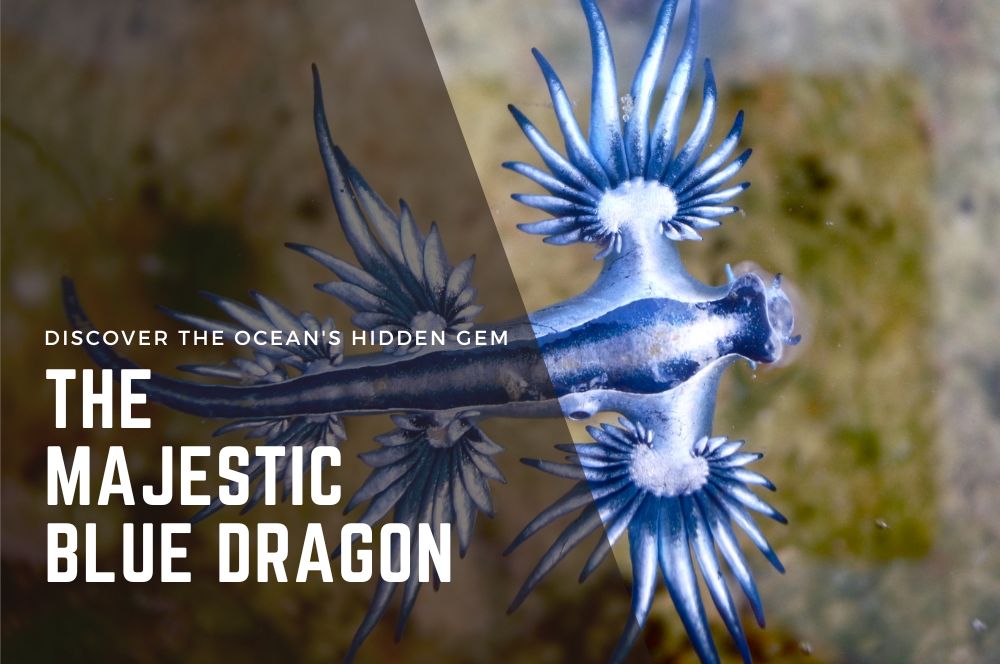
Discover the Ocean's…
Discover the Ocean's Hidden Gem: The Majestic Blue Dragon Encountering the blue dragon, or Glaucus atlanticus, […] -
Discover the Biggest Fish: Giants of…
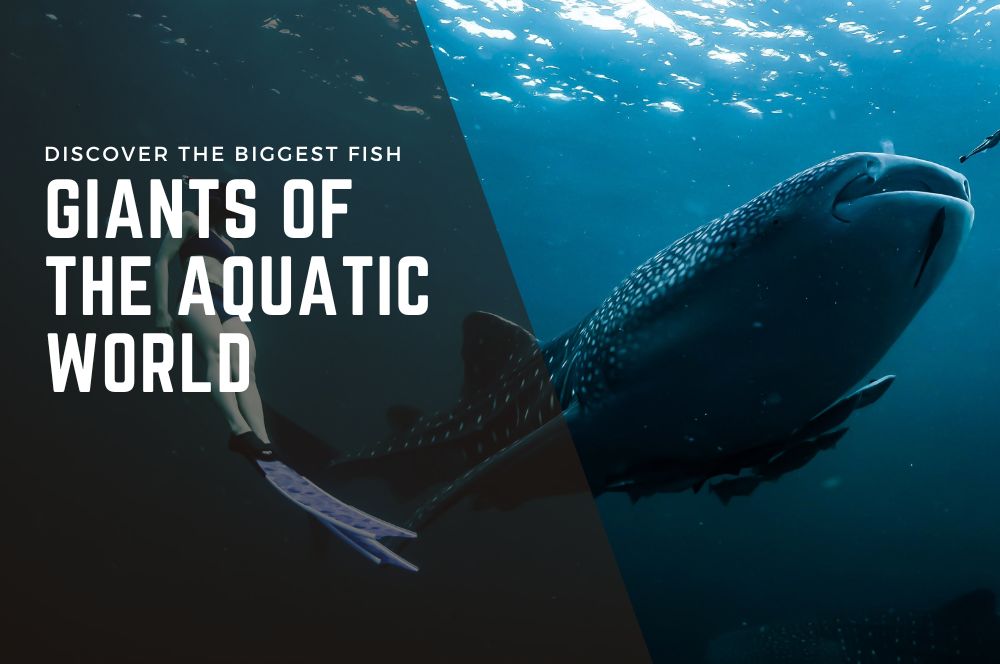
Discover the Biggest…
Discover the Biggest Fish: Giants of the Aquatic World The whale shark reigns supreme as the ocean's gentle […] -
Discover Sydney's Underwater Rainforests:…
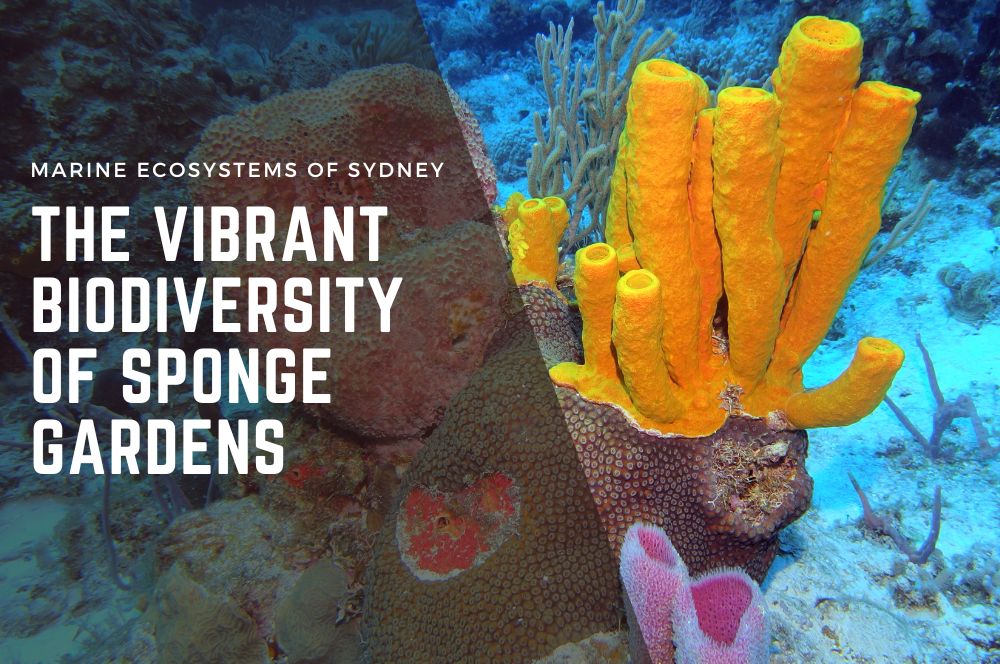
Discover Sydney's Underwater…
Exploring the Vibrant Biodiversity of Sponge Gardens in Marine Ecosystems of Sydney Sponge gardens are underwater […] -
Discovering the Blue Groper | A tribute…
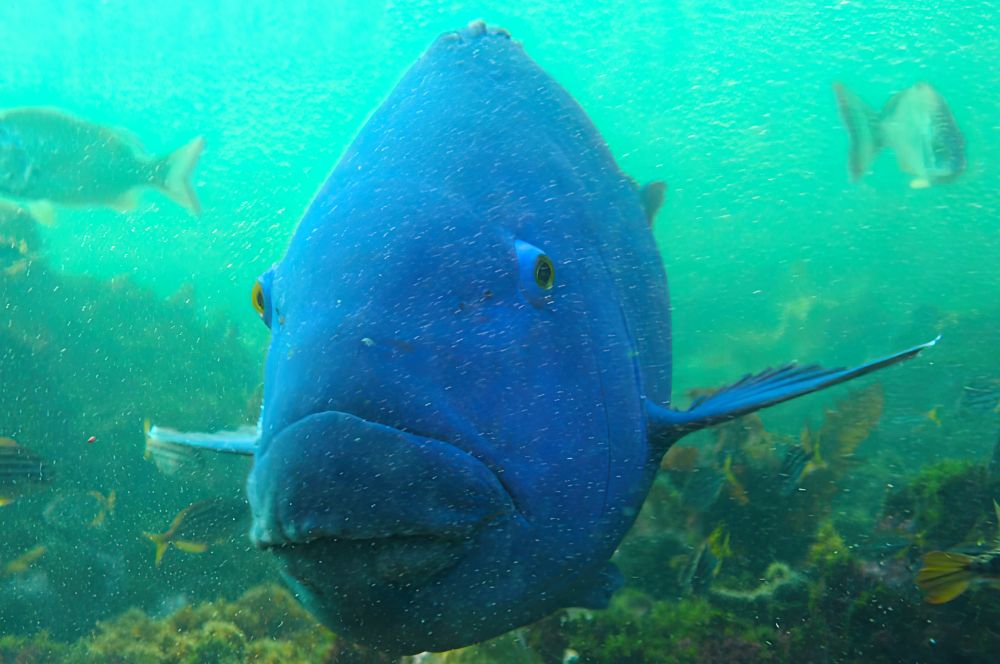
Discovering the Blue…
Discovering the Blue Groper: An Insight into Australia's Gentle Marine Giant This blog serves as a heartfelt […]
Recent Posts






